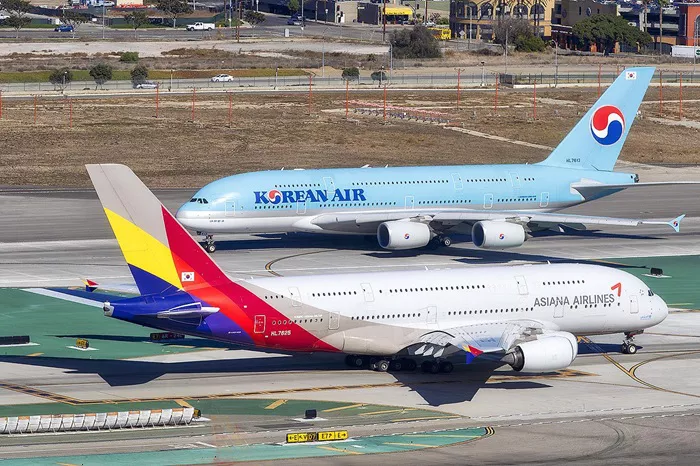Korean Air is soaring to new heights, capturing an impressive 92% of the flight capacity between South Korea and Japan, according to Cirium’s December 2024 report. This remarkable achievement highlights the deep travel connections between the two nations, with over 1.3 million scheduled seats linking these vital neighbors.
Japanese Airlines Struggling to Keep Pace
While South Korean carriers dominate the skies, Japanese airlines, including Peach Aviation, ANA, and Japan Airlines, hold just 7% of the market share. Ethiopian Airlines, leveraging its fifth-freedom rights, operates a niche route between Incheon (ICN) and Tokyo Narita (NRT), completing the mix of airlines serving this high-demand route. Of the 16 airlines operating between the two countries, 10 are from South Korea, underscoring the nation’s aviation dominance.
South Korea’s Unmatched Control Over Routes
The extent of South Korea’s dominance in the South Korea-Japan flight market is undeniable. South Korean carriers operate 46 of the 50 routes between the two countries, limiting the competitive space for others. On major routes, including Incheon-Narita, Gimpo-Haneda, and Incheon-Kansai, South Korean airlines control up to 90% of the market share. Leading the charge are heavyweights such as Korean Air, Asiana Airlines, and Jeju Air.
A Groundbreaking Merger Reshapes the Industry
The South Korean aviation sector is on the brink of a major transformation as Korean Air and Asiana Airlines move forward with their long-awaited merger. Once completed, the combined airline will control 32% of the total seat capacity on Japan routes, equating to over 830,000 seats. When factoring in subsidiaries like Jin Air, Air Busan, and Air Seoul, the group’s market share will soar to 60%.
The merger will also streamline South Korea’s domestic aviation sector, consolidating 10 carriers into just seven. This move is aimed at enhancing efficiency and creating a globally competitive airline group, with the new entity expected to control nearly half of South Korea’s total international seat capacity.
The Role of Foreign Airlines in a South Korean Dominated Market
Despite the overwhelming presence of South Korean airlines, foreign carriers continue to play an essential role in the region’s aviation ecosystem. With 75 international airlines currently operating in South Korea, the government is focused on maintaining a competitive and diverse market. Leading airlines from countries like Vietnam and China are carving out small but significant shares, emphasizing the importance of a balanced aviation landscape.
Expanding Beyond Japan
While South Korean airlines dominate the South Korea-Japan routes, this is only the beginning. The Korean Air-Asiana merger is expected to pave the way for further global expansion, positioning South Korea as a formidable player in the global aviation industry. By streamlining operations, increasing capacity, and improving services, the country aims to break into the top 10 global aviation markets.
South Korea’s aviation industry is on the rise, driven by strategic mergers and forward-thinking policies. As it continues to grow, the nation is poised to play an increasingly pivotal role in connecting people, businesses, and cultures across the globe—one flight at a time.
Related topics:
- Alaska Airlines Debuts Exclusive Direct Route to D.C. from San Diego
- Lulutai Airlines Adds Extra Flights for Christmas with Chartered ATR 72
- Malaysia Airlines Adds Extra Flights for Peak Travel Season

